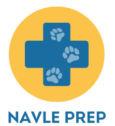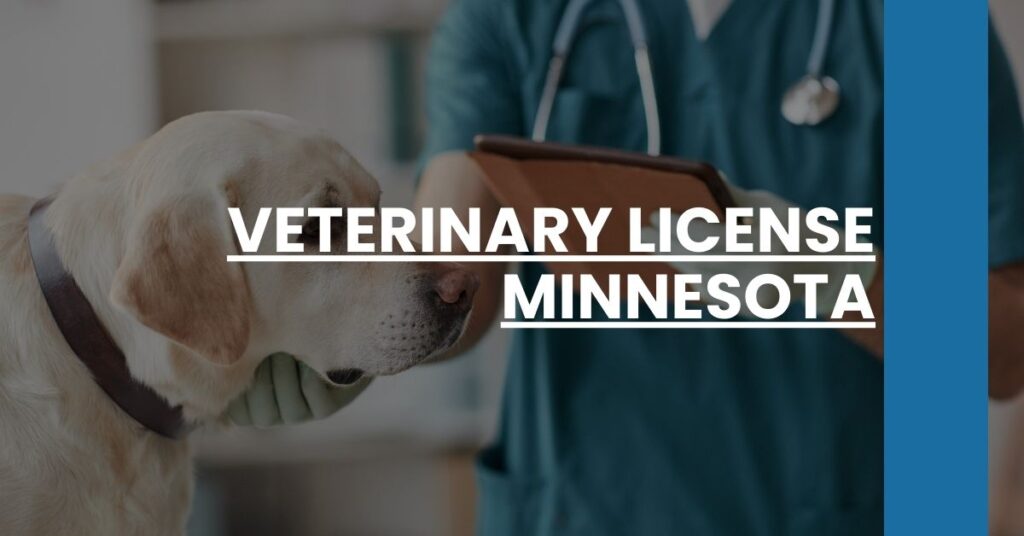Looking for schools in a specific city? Check out our lists of Veterinarian Schools in Minneapolis, St. Paul, and Rochester.
Navigating the path to earning a Veterinary License in Minnesota can seem daunting. With numerous steps involved, it’s natural to feel overwhelmed. I understand how critical this process is for your career. That’s why our team has put together a comprehensive guide to help you every step of the way.
In this guide, we’ll explore:
- The exact steps to obtain a Veterinary License in Minnesota
- Key educational prerequisites and necessary documentation
- Costs and fees associated with licensure
Our aim is to make this journey as clear and straightforward as possible for you.
- Steps to Obtain a Veterinary License in Minnesota
- The Role of the Minnesota Board of Veterinary Medicine
- National Licensing Examination (NAVLE)
- Continuing Education Requirements
- Transferring a Veterinary License to Minnesota
- Career Opportunities for Licensed Veterinarians in Minnesota
- How to Become a Veterinarian
- Frequently Asked Questions About Veterinary Licensure in Minnesota
- Looking for Veterinarian Information On States Bordering Minnesota?
- Conclusion
Steps to Obtain a Veterinary License in Minnesota
Becoming a licensed veterinarian in Minnesota involves multiple, well-defined steps. Understanding the process thoroughly helps you navigate it more efficiently.
Educational Requirements
Veterinary Degree: To qualify for licensure, you must hold a degree from an accredited veterinary college. This ensures that you have received a comprehensive education aligned with national standards. If you’re an international graduate, you need to present an Educational Commission for Foreign Veterinary Graduates (ECFVG) certificate or Program for the Assessment of Veterinary Education Equivalence (PAVE) certificate.
Documentation: Final-year veterinary students can apply if they provide a Dean’s certificate confirming their expected graduation date.
Application Preparation
Eligibility Criteria: Before applying, ensure you meet the basic eligibility requirements: you must be at least 18 years old and of good moral character.
Key Documents Needed
- Proof of Education: Submit transcripts from your veterinary school.
- Character References: Provide affidavits from licensed veterinarians attesting to your professional conduct and capabilities.
- Examination Scores: Include scores from required examinations.
Examinations
North American Veterinary Licensing Examination (NAVLE)
The NAVLE is a critical hurdle in the licensure process.
- Scheduling the Exam: Register through the appropriate board well ahead of deadlines to secure your slot.
- Preparing for the NAVLE: Utilize reputable resources such as VetPrep and Zuku Review. Practice exams are available at NAVLE Practice Test.
- Examination Day Tips: Familiarize yourself with the test center, use provided tutorials, and balance study with self-care.
Minnesota Veterinary Jurisprudence Examination
- Importance: You must pass this exam, which tests your knowledge of state-specific veterinary laws and regulations.
- Fee: The fee for this examination is $50.
Application Submission
- Form and Fee: Complete the application form available on the Minnesota Board of Veterinary Medicine website. There’s an application fee of $50.
- Supporting Documents: Attach all required documentation, including proof of education and professional conduct.
- Fee Payment: Pay applicable fees promptly to avoid delays.
Licensing and Renewal
Once licensed, ongoing compliance with state regulations ensures you maintain your license.
Key Actions:
- Continuing Education: Complete 40 hours of continuing education (CE) every two years.
- Renewal Process: Submit documentation of CE, pay the renewal fee, and ensure compliance with all professional standards.
The Role of the Minnesota Board of Veterinary Medicine
The Minnesota Board of Veterinary Medicine plays a pivotal role throughout the licensure process.
Licensing Authority
Issuing Licenses: The board evaluates applications, verifies qualifications, and issues licenses to qualified candidates.
Oversight and Compliance
Professional Conduct: The board monitors practicing veterinarians to ensure ethical and professional standards are upheld. This includes conducting facility inspections and investigating complaints.
Disciplinary Actions
Enforcing Standards: When violations occur, the board takes disciplinary actions, which may include fines, suspension, or revocation of licenses.
Continuing Education and Public Health
The board also ensures that practitioners remain current in their knowledge through CE requirements, thereby safeguarding public health and animal welfare.
National Licensing Examination (NAVLE)
Passing the NAVLE is a significant milestone in your journey toward becoming a licensed veterinarian.
Importance of the NAVLE
National Standard: The NAVLE ensures all veterinarians possess a standardized level of knowledge and competence. This examination is a necessary step for practicing in any state, including Minnesota.
Preparing for the NAVLE
Study Resources: Utilizing comprehensive study guides like VetPrep and Zuku Review can enhance your preparation. Accessing practice tests early, such as those available at NAVLE Practice Test, provides a practical sense of the exam format and types of questions you will face.
Success Tips:
- Consistent Study Routine: Develop a balanced study plan.
- Practice Exams: Regular practice helps familiarize you with the exam structure.
- Self-Care: Maintain a healthy balance between study and relaxation.
By adequately preparing for the NAVLE, utilizing available resources, and maintaining a disciplined study schedule, you set yourself up for success in this crucial examination.
Continuing Education Requirements
To maintain your Veterinary License in Minnesota, you must fulfill specific continuing education (CE) requirements. These requirements ensure that you stay updated with the latest advancements in veterinary medicine and maintain high professional standards.
What Are the CE Requirements?
You need to complete 40 hours of approved continuing education every two years. This helps ensure you keep up with the evolving field and provide the best care to your animal patients.
- Interactive Learning: At least 30 of these hours must come from interactive sources like live webinars, conferences, or hands-on workshops. Interactive learning is critical as it often involves direct participation and immediate feedback, fostering deeper understanding.
- Practice Management Credits: A maximum of 10 hours can be from practice management courses. These courses help you manage your practice better but have a limit to ensure most of your education focuses on direct veterinary care.
- Documentation: Keep detailed records of your CE activities. The Minnesota Board of Veterinary Medicine can request proof at any time.
How to Find CE Opportunities?
Many organizations and institutions offer CE opportunities:
- Professional Associations: Groups like the American Veterinary Medical Association (AVMA) often provide accredited CE courses.
- Online Platforms: Websites like VIN (Veterinary Information Network) offer a wide range of online CE courses.
- Conferences: Attending conferences offers valuable interactive learning opportunities and network-building with peers.
Consequences of Non-Compliance
Not meeting CE requirements is considered unprofessional conduct. This can result in disciplinary action from the Minnesota Board of Veterinary Medicine, including fines or suspension of your license.
Transferring a Veterinary License to Minnesota
If you are a licensed veterinarian in another state and plan to transfer your licensure to Minnesota, the process is relatively straightforward but requires careful attention to documentation and eligibility criteria.
Requirements for Transferring Your License
- Proof of Active Licensure: Submit evidence of your active veterinary license from your current state. Ensure your license is in good standing and free of disciplinary actions.
- Supporting Documentation: Provide additional documentation such as transcripts, NAVLE scores, and proof of CE completion.
- Possible Additional Evaluations: Depending on your background, you may need to meet extra evaluations or requirements laid out by the Minnesota Board of Veterinary Medicine.
Temporary and Special Licenses
Minnesota offers temporary licenses for certain situations, such as visiting clinicians at universities. Understanding these provisions can make your transition smoother if you fall into such categories.
Steps to Transfer Your License
- Research Requirements: Start by understanding Minnesota’s specific requirements for transferring a license.
- Gather Documents: Collect all necessary documentation, ensuring it meets the state’s standards.
- Submit Application: Complete the application process through the Minnesota Board of Veterinary Medicine website.
- Await Approval: After submitting, wait for the board to review your application and provide approval.
Career Opportunities for Licensed Veterinarians in Minnesota
Minnesota offers a diverse and rewarding career landscape for licensed veterinarians. Whether you’re interested in private practice, research, or public health, there’s a role for you.
Private Practice
Many veterinarians in Minnesota find rewarding careers in private practice, providing care for small animals like cats and dogs. These practices often:
- Offer Diverse Experiences: You’ll encounter a variety of cases, from routine check-ups to complex surgeries.
- Allow Specialization: Many practices allow you to specialize in areas like oncology, dermatology, or orthopedics.
Research and Academia
For those interested in pushing the boundaries of veterinary science, Minnesota’s research institutions offer exciting opportunities:
- Academic Positions: Universities like the University of Minnesota hire veterinarians for teaching and research roles.
- Research Opportunities: Engage in groundbreaking research on animal health, contributing to advancements in the field.
Public Health Roles
Veterinarians play a crucial role in public health, working to control zoonotic diseases and ensure food safety:
- Government Agencies: Positions in agencies like the Minnesota Department of Health focus on surveillance and control of animal diseases that affect humans.
- Food Safety: Work with agricultural organizations to ensure the health of livestock and the safety of the food supply.
Example Positions
Explore various job postings to find a career path that matches your interests and goals:
- Anatomic Pathologists: Engage in diagnostic research to understand diseases affecting animals.
- Managing Veterinarians: Oversee clinic operations, ensuring high standards of veterinary care.
- Associate Veterinarians: Work in established practices, gaining experience and mentoring opportunities.
For more insights on finding the right veterinary school to start your journey, visit best veterinary schools.
How to Become a Veterinarian
Becoming a veterinarian takes dedication and commitment. Here’s a general outline of the steps you need to take.
Educational Pathway
- Bachelor’s Degree: Start with a bachelor’s degree focusing on pre-veterinary courses like biology, chemistry, and animal science.
- Veterinary School: Gain admission to an accredited veterinary school, which typically lasts four years. Here, you’ll receive comprehensive training in veterinary medicine.
Licensing and Certification
- Complete NAVLE: Pass the North American Veterinary Licensing Examination (NAVLE), an essential step for licensure.
- State Licensure: Apply for a veterinary license in the state where you intend to practice. Each state has its own requirements.
For detailed guidance, check out how to become a veterinarian.
Frequently Asked Questions About Veterinary Licensure in Minnesota
If you’re considering a career as a veterinarian in Minnesota, you likely have several questions. Here are answers to some of the most common queries.
When Should I Start the Application Process?
You should begin the application process several months before you plan to start practicing. This allows ample time for gathering documents, studying for exams, and completing all requirements.
How Do I Schedule the NAVLE?
You can schedule the NAVLE through the American Association of Veterinary State Boards (AAVSB). Make sure to register early, as slots fill up quickly, especially around peak times.
What Are the Costs Involved?
Plan for costs such as:
- Application Fee: $50
- NAVLE Fee: Variable but typically around $600
- Jurisprudence Exam Fee: $50
- License Renewal Fee: Check the latest state fee schedule
What Happens If I Don’t Meet CE Requirements?
Failing to meet continuing education requirements can result in penalties, including fines or suspension of your license. It’s crucial to stay on top of these requirements.
Can I Transfer My License from Another State?
Yes, but you’ll need to provide proof of your active, good-standing license from another state and meet Minnesota’s specific requirements.
Looking for Veterinarian Information On States Bordering Minnesota?
In addition to Minnesota, we suggest looking for schools in nearby states.
- Veterinary License Wisconsin
- Veterinary License Iowa
- Veterinary License North Dakota
- Veterinary License South Dakota
- Veterinary License Michigan
Conclusion
Obtaining a Veterinary License in Minnesota involves several crucial steps, from acquiring the right education to fulfilling continuing education requirements. By understanding and following these steps diligently, you can pave the way for a successful and fulfilling career in veterinary medicine. For more on how to get started, visit how to become a veterinarian.

